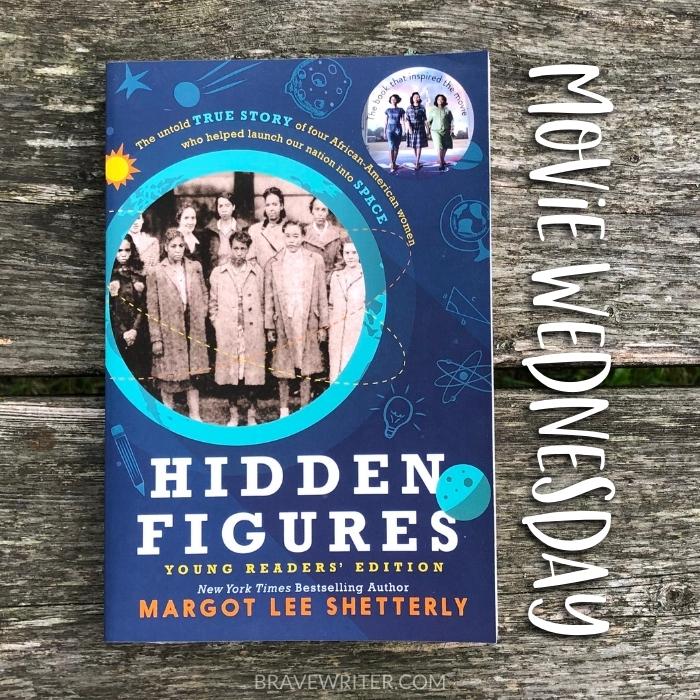Movie Wednesday: Hidden Figures

Take three brilliant minds, add vision, humor, determination, and extraordinary math skills and what do you get? Katherine G. Johnson, Mary Jackson, and Dorothy Vaughan’s inspiring true story, Hidden Figures! This uplifting film depicts these women’s lives and their mathematical contributions to NASA that helped launch John Glenn into orbit and revolutionize the Space Race.
In 1961, unique, sought-after skills and exceptional intelligence couldn’t protect Black mathematicians from racism, segregation, and sexism faced both at work and in their daily lives. When the system fails to recognize the merits of their work, Katherine, Mary, and Dorothy create opportunities for themselves and go on to exceed the expectations of their peers.
The 2016 film was directed by Theodore Melfi and based loosely on Margot Lee Shetterly’s book by the same name.
The movie was well-received, and the National Board of Review marked it as one of the top ten films of 2016. Hidden Figures received three nominations at the 89th Academy Awards, and won the Screen Actors Guild Award for Outstanding Performance by a Cast in a Motion Picture.
Despite multiple honors, the film’s reception wasn’t all positive. Concern that the movie featured a White savior narrative that deflated the women’s accomplishments was voiced. You can discuss this point with your kids. Find out what they think.
Bill Barry, NASA’s chief historian, worked with Melfi, the film’s director, to ensure the film was as accurate as possible. As is often the case in film adaptations, not every detail is historically accurate. Moments are added to drive home specific points, ramp up tension and drama, and move the plot forward. Before or after you watch the film, look up these fictional flourishes by searching online for Hidden Figures’ historical inaccuracies. Reflect on the ways they enhance or compromise the power of the story.
Sometimes a title says it all! Hidden Figures has a double meaning referring both to the women themselves, who went unknown for many years, and to the numbers they worked with. Taraji P. Henson (Katherine) drives home the title’s merit in a comment to a reporter in which she notes that prior to making the film, she had never heard of Katherine, Mary, or Dorothy. “And I went to an historically black university, where Ron McNair—who died in the launch to space—had attended. I actually studied electrical engineering. I failed, but I was there. And this man has a building named after him. If it wasn’t for Katherine Johnson, there would have been no Ron. But hey, who am I? Never heard of her. I was annoyed. I was mad. And this became my passion project. I was like, ‘I have to do this movie.’”
This highly discussable film provides a bounty of material for you and your teen to ponder together. So have at it! Get out the popcorn, put up your feet, and enjoy the show!
A note to parents: In one good-natured scene, Mary drinks alcohol and gets a little silly with friends. There is mild kissing and flirtatious language. This film is rated PG.
Discussion Questions
1. Describe the NASA workplace and the racial tension depicted in the film. How did the women navigate this discrimination? How do you think such obstacles might have impacted their work?
2. Ultimately, why do you think Al Harrison gave Katherine access to the information she needed to work on trajectory analysis for Alan Shepard’s mission? Beyond her talents as a mathematician, what other qualities convinced Harrison she was the right person for this important job?
3. After a heartbreaking scene in which she and her sons are escorted out of the library, Dorothy notes that “separate but equal are two different things. Just because it’s the way don’t make it right.” What did she mean?
4. What do Kennedy’s words “We choose to go to the moon and do the other things not because they are easy but because they are hard” mean to you? Have you ever taken on a challenge, perhaps in sports or the arts, that felt all the more worthwhile because it was difficult? Describe that experience and what it felt like to take on that challenge.
5. At the end of the film, Katherine is gifted with a pearl necklace. What was the significance of this act? What did the pearl necklace symbolize?
Take Flight with this Extension Activity
Invite your kids to experiment! Search the internet for DIY paper airplanes. Try out a variety of designs and conduct a series of flight tests. Observe the distance, speed, and flight trajectory of each plane. Experiment with design elements such as flaps, tails, and extra weight.
Learn language arts naturally with the Hidden Figures: Young Readers Edition Boomerang.
The Boomerang is a digital downloadable product that features copywork and dictation passages from a specific read aloud novel. It is geared toward teens ages 13–14) and is the indispensable tool for Brave Writer parents who want to teach language arts in a natural, literature-bathed context.


















